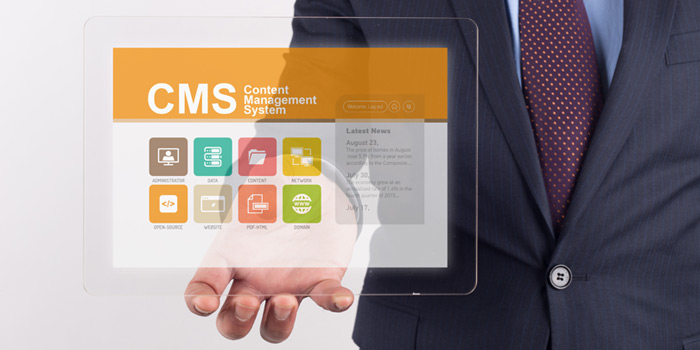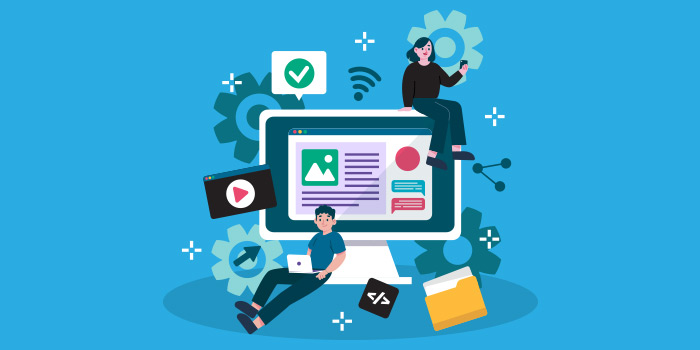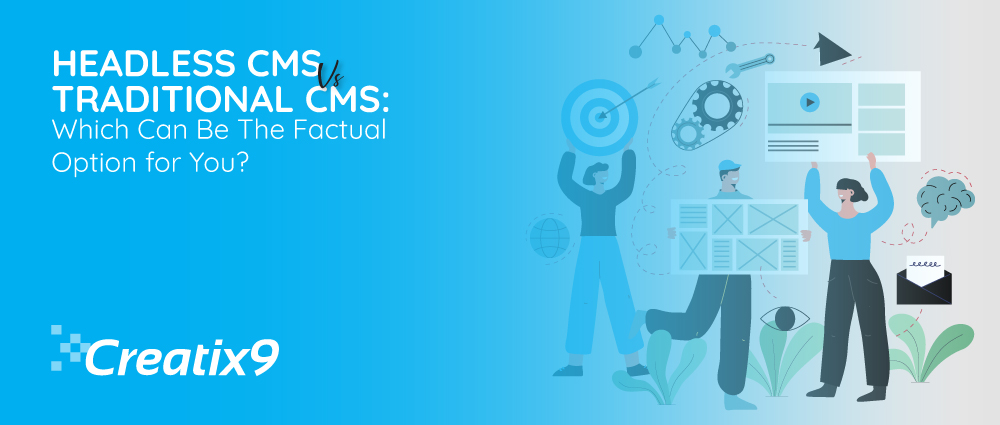
When looking for a new CMS, you’ve probably encountered the term “headless CMS.” So here, Creatix9 UK, the top CMS website development containing the most skilled online web development experts, will provide you with a learning guide to what a “headless” CMS is, how it stacks up against other CMS options, and which one is the best fit for your needs.
What Is A CMS?
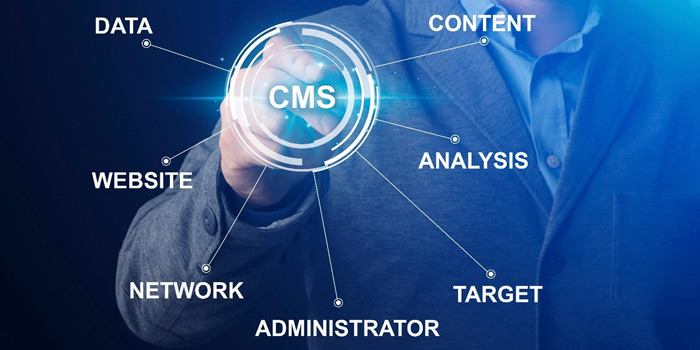
A CMS or content management system is a platform that allows business users to author and distribute content with no knowledge of coding. Content delivery to a website, mobile app, or other digital technologies is possible with CMS.
CMS are key to producing and organising content. The collaboration and governance tools with many modern CMS solutions support managing content throughout its lifecycle.
Traditional CMS Vs Headless CMS
Today, we’ll discuss two intense flavours of CMS: the traditional CMS and its cutting-edge offspring, headless CMS.
Over the past decade, incorporating your content management system (CMS) with your site’s design has become increasingly important. Integrating the CMS into the site’s architecture has simplified content maintenance, eliminating the time and effort formerly spent on tasks like HTML generation, file transfers using FTP, etc.
A traditional CMS such as Drupal or WordPress is a hunk of code or monolith that manages a website’s front and back ends in a very neat codebase. They contain the all-inclusive stack, from the database of the content to the presentation layer.
A headless CMS is distinct because it has no front-end integration. Unlike traditional (CMSs), which seek to manage content and user interfaces, headless CMSs focus just on the content. After creating and revising the content, it is published using an API and nothing else is required. There is zero interaction between the headless CMS and the user interface. This allows you to distribute your content in as many ways as you like.
The Basics Of Headless CMS
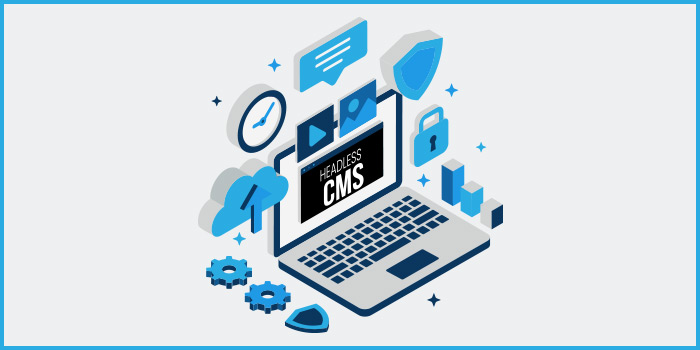
Headless CMS disconnect the “head” or user interface from the “body” or content creation, management, and storage portions of a website. API technology allows communication and collaboration for both sides of the platform.
Because of its structure, a headless CMS is viable for enterprises with heavy and complex content requirements. You can produce, bring about and store modules that are reusable by means of your marketing and content teams. The CMS is also available to designers and developers. It allows them to incorporate apps and languages to create innovative processes that push this content to chatbots, smartwatch apps, adaptive webpages and other digital experiences.
Next, we’ll review some fundamental characteristics shared by the most effective headless CMS options.
APIs
The headless CMS relies heavily on its application programming interface (API). Another name for Headless (CMSes) is API-first CMSes. Few APIs provide content for Omni-channel digital experiences. Other APIs build interaction channels between programmes, allowing them to collaborate on optimising content modules. These applications usually have customer or product information that enhances personalisation for the user and the situation when inserted into the content.
Capacity For Integration
The design of headless CMSes is loosely connected (through API) and flexible, ensuring that you’ll be all time ready for future integrations.
With a headless CMS, it’s easy for developers to include third-party applications for content enhancement. Users frequently combine features from other applications, such as those used for product information management (PIM), CRM, ERP, marketing automation, and analytics. They make it possible for marketing teams to quickly produce unified content-driven experiences at a significant scale.
Management Software For Content
Powerful text-editing tools, customisable content models and modules, workflows for content generation and approval, role-based access control, previews of published material, and automated publication are some of the features that make a headless CMS useful.
Developer Resources
The goal of a headless (CMS) is to ease the workload of both developers and marketers. It should contain development resources such as easy-to-use APIs web frameworks, webhooks, SDKs, extensive documentation, devOps services and customer support.
All About Traditional CMS
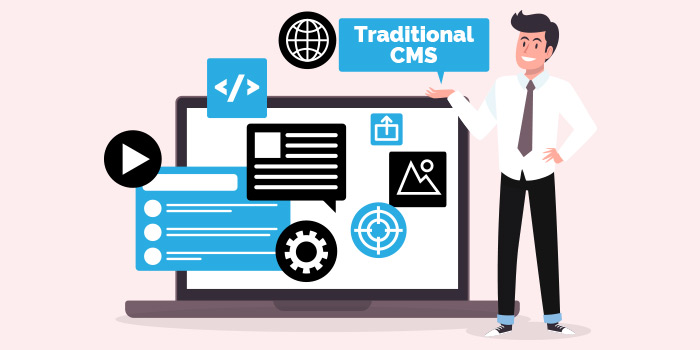
Users can develop, manage, and publish material using Traditional (CMS). Monolithic systems, in contrast to headless CMSes, have the back end and front end tightly integrated into a single technical area. Under this setup, a piece of content is considered complete after publication. Due to the inability to store in modules, you cannot easily reorganise and reuse content assets is a significant drawback of conventional systems. Using a plugin instead of an integration allows the addition of new feature or functionality to a traditional CMS challenging.
All classic, monolithic CMSs share specific characteristics.
Integral System
Conventional (CMSs) have a prominent feature of a single monolithic platform that feeds website content. Due to its architecture, you can use it immediately without needing development support, sacrificing flexibility.
Templates + Plugins
Because their sole purpose is to serve content to websites, traditional CMSes only require a little adaptability in this area. Because of this, they frequently use pre-made themes or templates to present information. You cannot customise these layouts easily. This layout works great for corporate users. However, making any modifications to the features or functionality can be challenging.
For instance, adding plugins is the best way users can perform to personalise their traditional CMS. Plugins are pre-built programmes that you can integrate into a traditional CMS. As they function more like an alternative option than a proper integration, they are made to break down the monolith’s complete lines.
Management Software For Content
Traditional CMS primarily emphasises managing content and its feature. They can contain digital asset management, thorough text formatting, permissioning, version tracking, WYSIWYG editors that let marketers see how their content will look on the live website, and more.
Ease-Of-Use For Corporate Customers
Many businesses without in-house development teams opt for a classic CMS because of its simplicity. Traditional (CMS) are a no-brainer when all you want to do is build an essential website.
Why Did Headless CMS Break Apart From The Traditional CMS?

Earlier, the only thing exist online was static websites. The standard CMS framework worked fine for this purpose.
But, encounters nowadays are anything but static. The proliferation of IoT devices and digital channels is primarily due to the internet. Customers using these devices and channels ask for tailored, coherent, always-on experiences.
For this reason, here comes the headless CMS. The demand for reused content encouraged vendors to develop solutions that linked existing content management systems in use by businesses. Managing content on a wide scale has never been easier than with a headless CMS.
However, you can contact Creatix9 UK or hire e-commerce web developers from us if you consider having a headless CMS for your website. We are the finest CMS website development company with experienced and well-trained online web development experts in the UK.
You May Require A Headless CMS When…
1. Today, Marketing Oversees A Variety Of Content Management Systems.
With available headless CMS choices, your marketing team don’t require to rebuild content across multiple CMS installations. A headless CMS can offer the content you develop to different channels simultaneously, even when you’re currently manually managing various platforms for your sub-brand and foreign-language websites.
2. Omni-Channel Publication Is A Way For Your Marketing Strategy
Investing in a headless CMS is time well spent if Omni-channel publishing is a central focus of your marketing efforts. Create content once, process it through several services (CRM, translation, etc.), and publish it to several channels simultaneously with the help of a headless CMS, thanks to its modular structure and integration features.
3. Marketing Is Being Slowed Down By Development.
A major hurdle with monolithic CMSes is that often, only tech-savvy marketing professionals or developers have the ability to operate them. Because of this, creative teams sometimes must wait days, if not weeks, for technical teams to support them with publishing or editing content. Suppose you can’t wait that long to release campaigns; a headless CMS will immediately give all teams involved complete independence.
4. Your Company’s Website Is The Hub Of Your Online Presence.
Engaging in technological interactions? Intelligent online storefront? Quick customisation of content? These interactions are not possible with monolithic CMSs since they rely on templates and a unidirectional flow of content. Build your website on a flexible, composable, headless CMS if you want it to be a platform for creating innovative, customer-first experiences.
5. Comprehensive Network Protection Is Essential.
Companies that gather customer information to tailor experiences to individuals must take precautions to protect that information, mainly if they operate globally. With their plugins and overall monolithic design, traditional CMSes present more entry points for hackers than their headless counterparts.
You May Require A Traditional CMS When…
1. You Value Website Usability Above All
A traditional (CMS) is the way to go if your company’s website requires little customisation, you have no plans to alter its features or functionality, and your top priority is that you can quickly and easily add content occasionally. Templates, in-app content management tools, and robust security measures are advantages of a traditional CMS.
2. Access To Development Support Is Restricted
Having in-house tech gurus is a luxury, not all businesses can afford. This is an ideal use case for the traditional CMSes that were designed with the low-tech needs of business users in mind.
3. No Need To Incorporate Omni-Channel Digital Experiences Into Your Business Model.
Many small organisations don’t have multichannel, content-driven experiences built into their marketing strategies or business models, just as only some firms need on-call developers. Traditional (CMSs) may be sufficient for your company if you don’t require the advanced customisation and integration features offered by headless CMSs.
Conclusion
While there is no silver bullet in CMS, we hope you understand the importance of research. Outside these two major types, the flavour variants come down to preference. For example, while deciding between two headless CMSs, you and your content suppliers will want to try out each one’s UI and API to see which works best for you.
We, Creatix9 UK, will lead you to the correct path to resolve your confusion which is best for you. As the UK’s top custom web and CMS website development firm, our online web development experts are always ready to serve you well.


